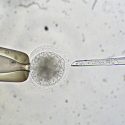Merger forms new department of forest and wildlife ecology
The departments of wildlife ecology and forestry ecology and management at the University of Wisconsin–Madison College of Agricultural and Life Sciences are merging to become the department of forest and wildlife ecology.
The new department’s greater size and disciplinary breadth will better position it to address many of today’s natural resource challenges, says forestry professor Ray Guries, who serves as chairman of the new department.
The merger brings together two departments that share common interests in natural resources, occupy adjacent space and already collaborate in a variety of instruction, research and outreach programs. The two departments also share some common history. Both are rooted in a department of wildlife management that was founded in 1939 by Aldo Leopold and grew to become the department of forestry and wildlife management in 1956. The separate departments were created in 1962.
"The faculties of the two departments have collaborated to ensure that the new department will maintain excellence in forestry and wildlife conservation, the two fields that were the pillars of Aldo Leopold’s professional career," says professor Scott Craven, who chaired the wildlife ecology department from 2000 until this year. "Our vision is to provide science-based research, instruction and outreach on forest and wildlife resources in an ecologically and socially sustainable fashion."
The combined unit will be more competitive for funding in basic and applied research and more flexible in managing instructional programs. Students will benefit from a broader array of courses, the melding of the two departments’ existing summer field camp and "capstone" courses, and better access to computing resources, labs, internships and other career opportunities, says Guries.
"We will continue to help students, stakeholders and the public understand and appreciate the importance of natural resources," Guries adds. "We will also work with natural resource agencies and professionals to help maintain and restore healthy ecosystems."
The combined department will have 20 faculty, plus a number of instructional and research staff and more than 200 graduate and undergraduate students. The department will continue to offer undergraduate majors in both forest science and wildlife ecology, together with master’s and Ph.D. programs in both forestry and wildlife ecology.

